VERY RARE! WWII 1944 Operation Reckless Task Force Koejaboe River - New Guinea "SPECIAL INVASION MAP" Assault on Hollandia and Sentani Airfields

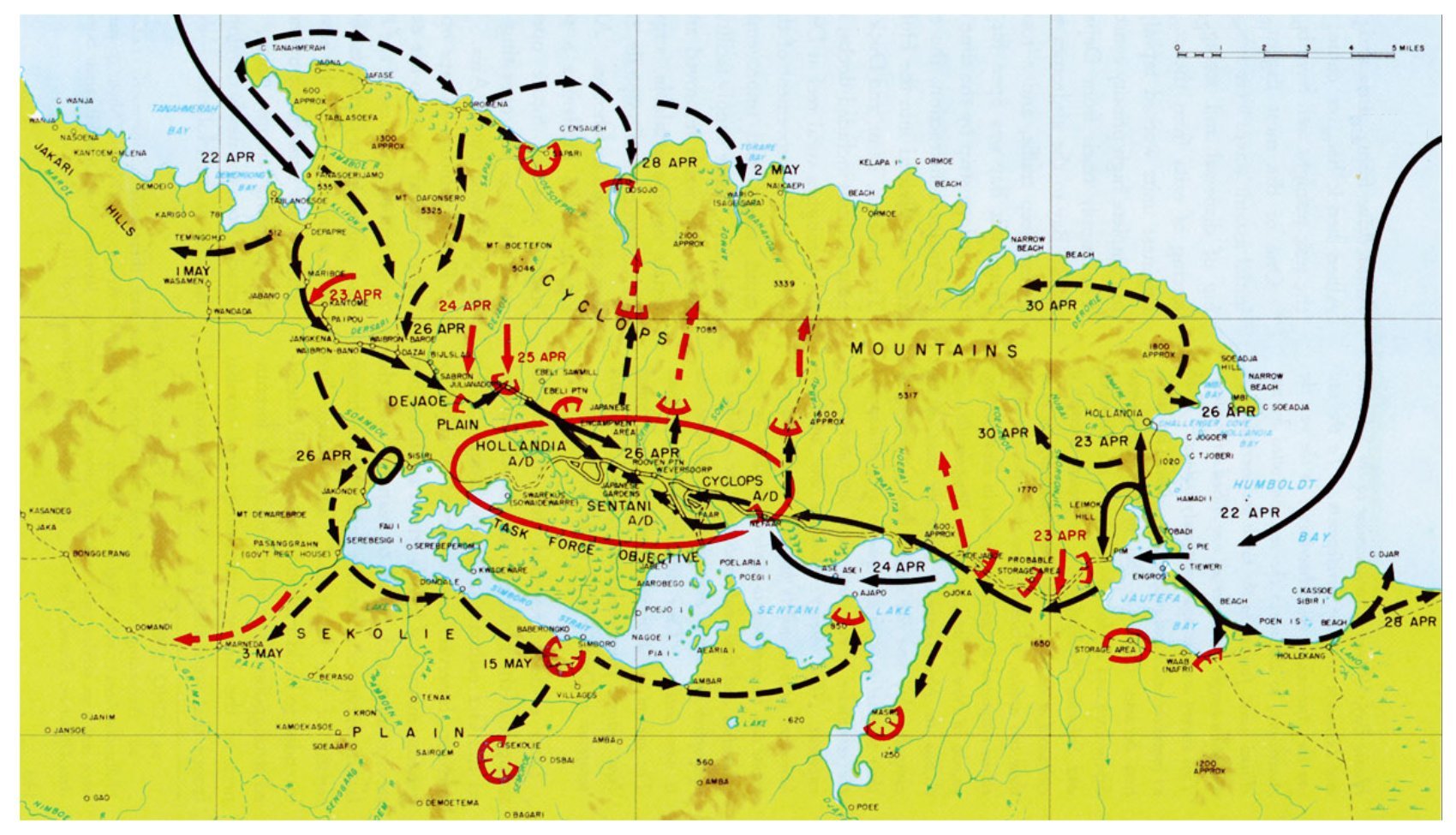


















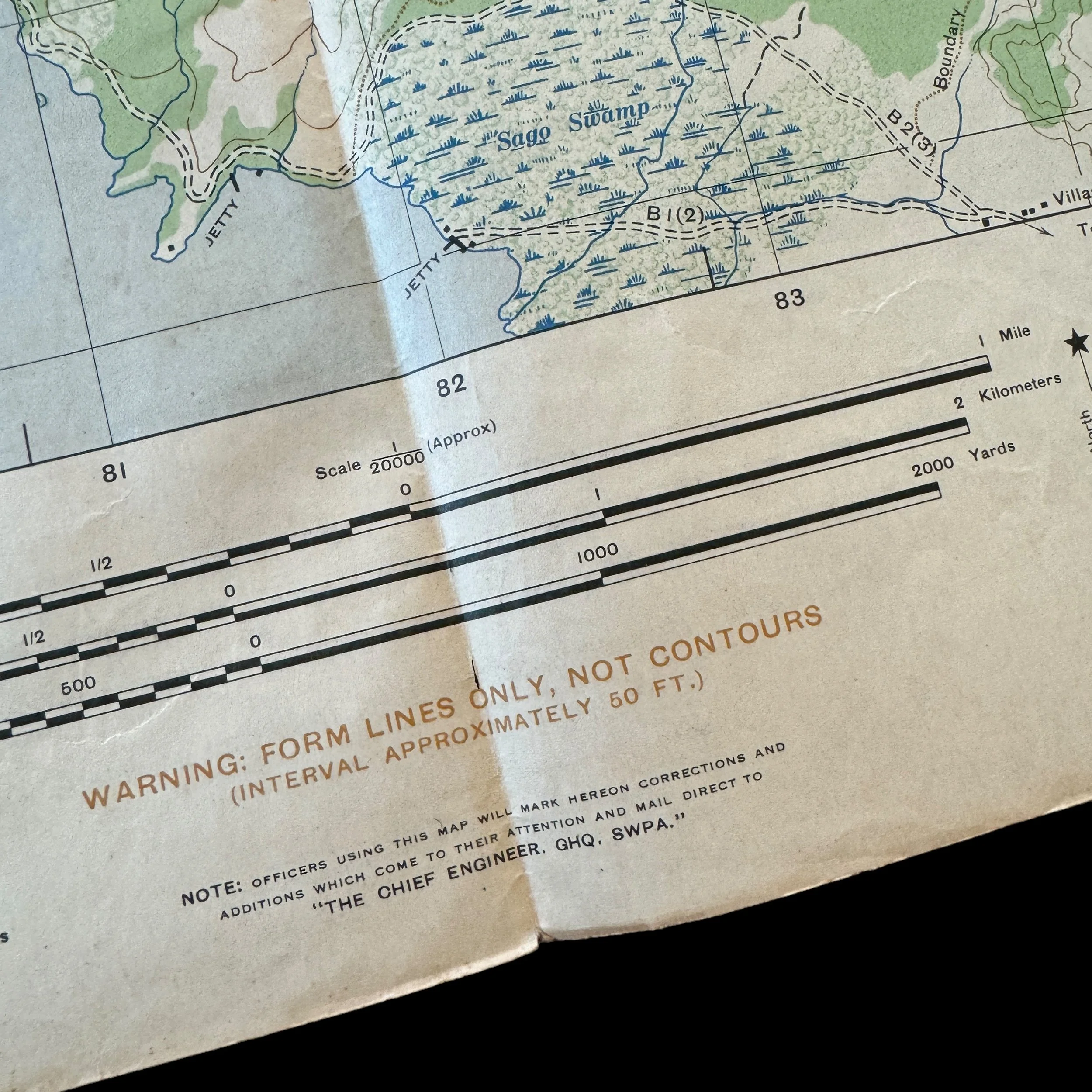















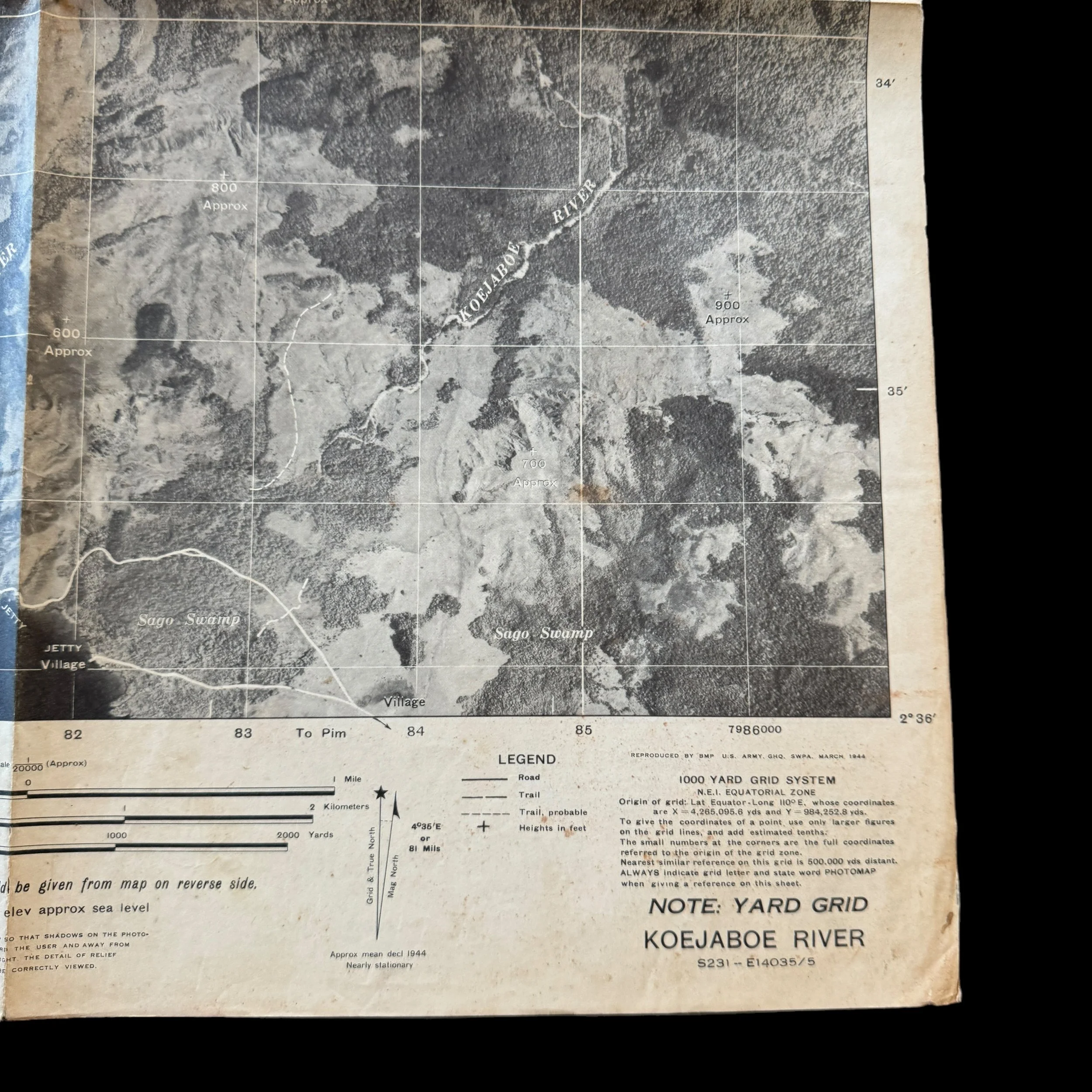

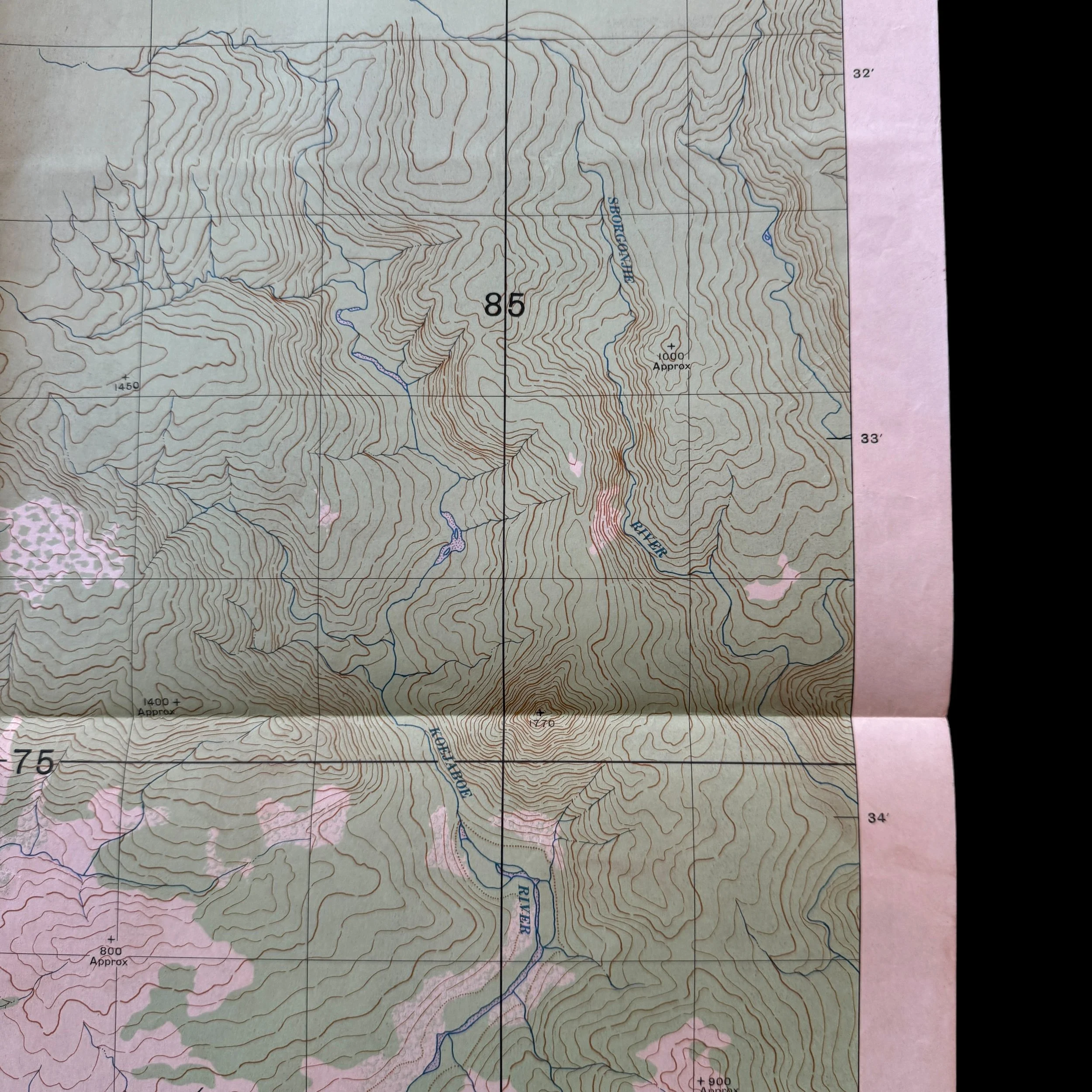
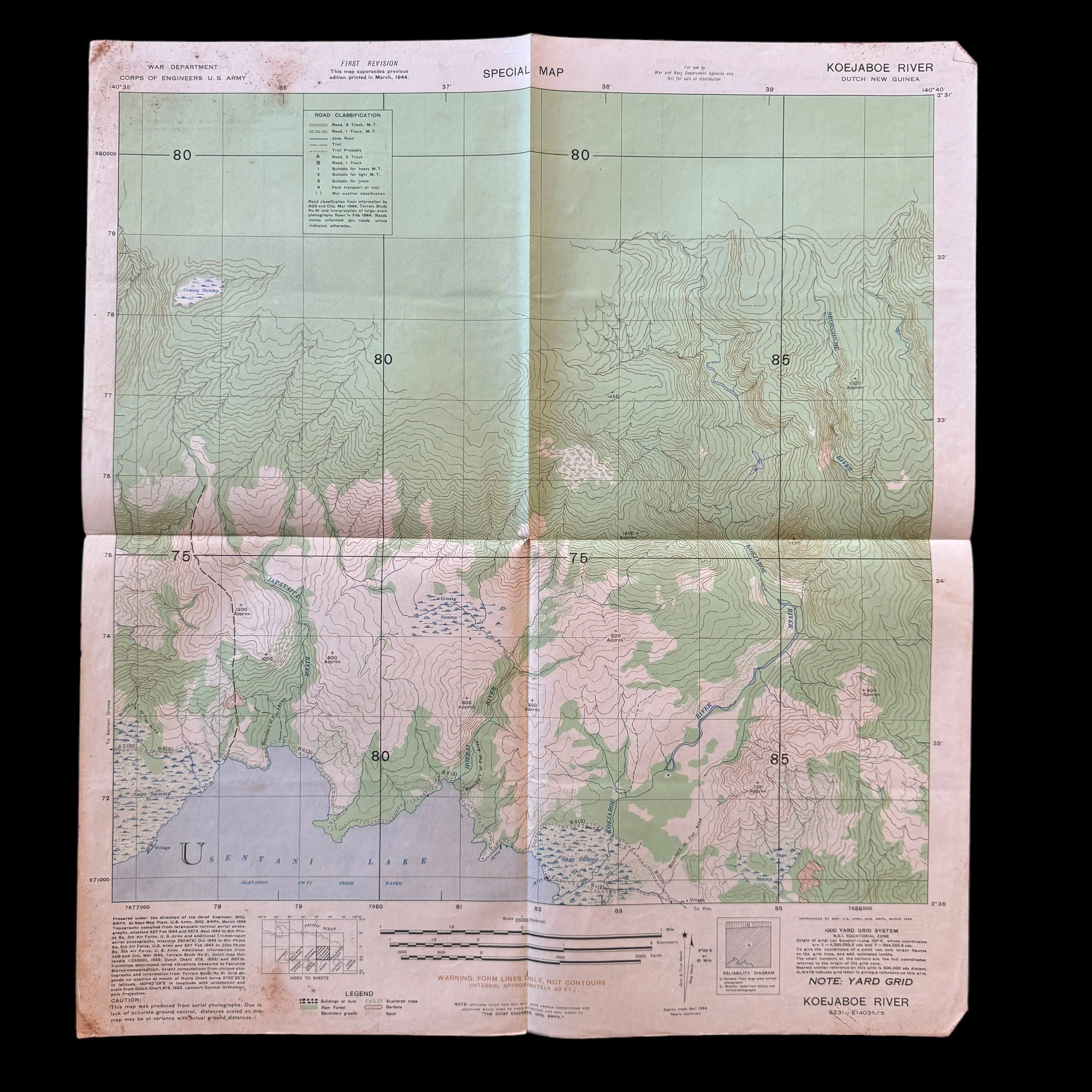





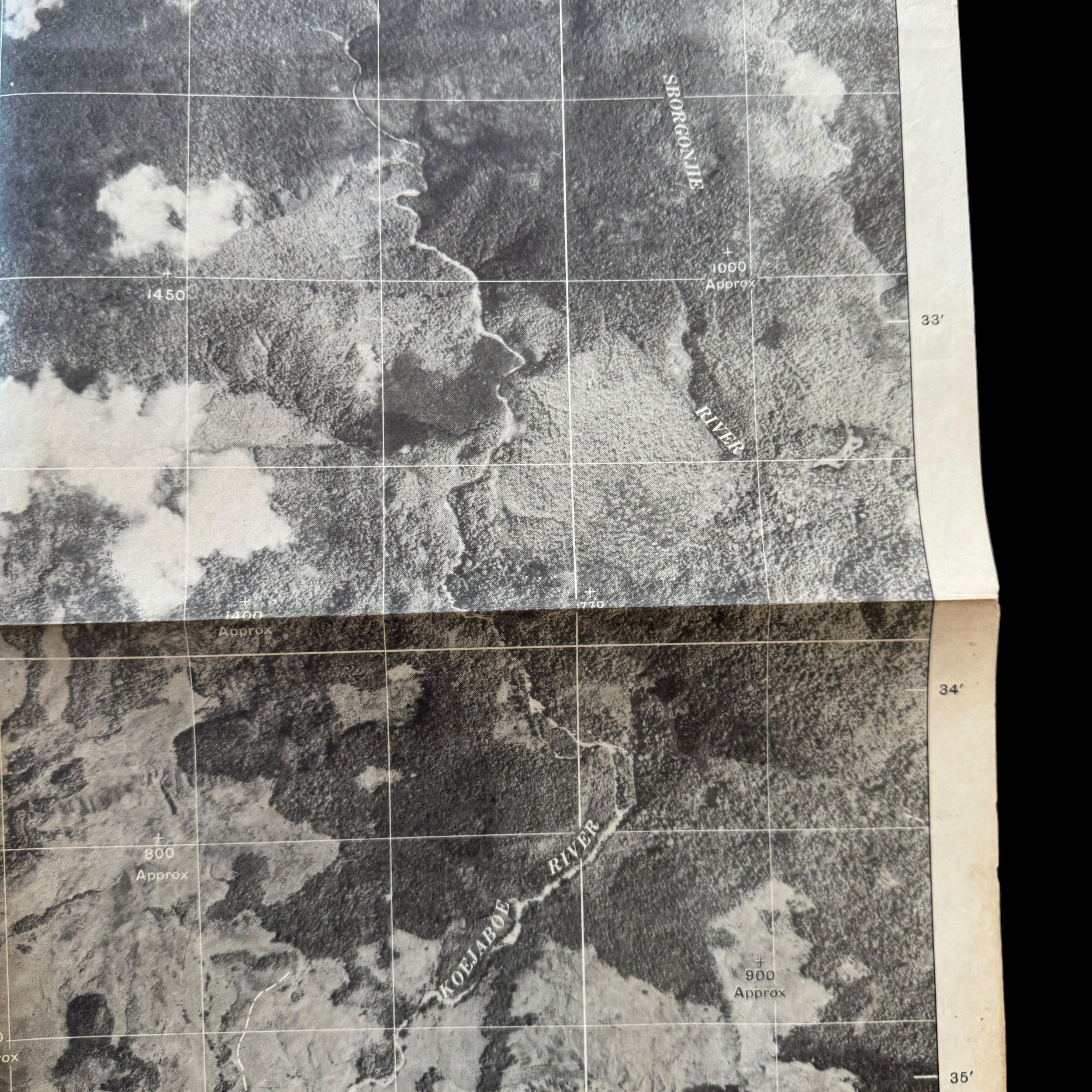












VERY RARE! WWII 1944 Operation Reckless Task Force Koejaboe River - New Guinea "SPECIAL INVASION MAP" Assault on Hollandia and Sentani Airfields
Comes with a hand-signed C.O.A.
Size: 20 x 22 inches
This incredibly rare and museum-grade WWII artifact is an original and heavily used 1944 dated combat operations map used during Operation Reckless and the Allied Campaign in Hollandia and Sentani, New Guinea (Pacific Theater). What makes this New Guinea invasion map so rare is that this was printed in March 1944 (one month before the Operation Reckless D-Day landing assault on the Hollandia area in April 1944. Prepared under the direction of the Chief Engineer this extremely rare double-side Hollandia New Guinea amphibious invasion map and rare ‘AERIAL SUPPORT PHOTO’ map was used in support of the Operation Reckless Task Force assault on the Japanese held airfields around the Hollandia Airfield and Sentani Airfield. The U.S. 8th Photo Squadron, 5th Air Force constructed this map from large-scale vertical area photograph missions. This “SPECIAL MAP” print also features a rare ‘PHOTO MAP’ on the backside showing a realistic view of the New Guinea terrain. These backside special ‘PHOTO MAPS’ are not common and are generally reserved for special divisions and operations.
Operation Reckless: The Battle for Hollandia and Sentani Dromes in New Guinea
Operation Reckless was a pivotal military campaign during World War II, targeting the Japanese strongholds around Hollandia (now Jayapura) and Sentani Dromes in New Guinea. Launched in April 1944, this operation was a critical component of General Douglas MacArthur's strategic plan to reclaim New Guinea from Japanese forces, thereby paving the way for the Allied advance towards the Philippines. This essay explores the intricate details of Operation Reckless, focusing on the battles around Hollandia and Sentani Dromes, and the strategic importance of the Koejaboe River area.
Strategic Context
By early 1944, the Allied forces had made significant progress in the Southwest Pacific, capturing key locations such as Buna, Gona, and Lae. General MacArthur, commanding the Allied forces, aimed to neutralize the Japanese presence in New Guinea to secure the eastern flank of the Allied advance towards the Philippines. Hollandia, with its three airfields (Sentani, Tami, and Cyclops), was a crucial target. Capturing these airfields would provide the Allies with a forward base for air operations and disrupt Japanese supply and communication lines.
Planning and Preparation
The planning for Operation Reckless began in early 1944. Intelligence reports indicated that the Japanese had heavily fortified the Hollandia region, with approximately 14,000 troops stationed there. The operation was designed as a surprise amphibious assault, leveraging the element of surprise to overwhelm the Japanese defenses.
To support the operation, the Allies amassed a formidable naval and air armada. Task Force 77, under the command of Vice Admiral Thomas C. Kinkaid, included battleships, cruisers, destroyers, and a fleet of transport ships. The Fifth Air Force, commanded by Lieutenant General George Kenney, provided air cover and conducted pre-landing bombardments to soften Japanese defenses.
The Battle for Hollandia and Sentani Dromes
The amphibious assault on Hollandia began on April 22, 1944. The landings were carried out in two main areas: Tanahmerah Bay and Humboldt Bay. The 24th Infantry Division and the 41st Infantry Division were tasked with securing these beachheads and advancing inland to capture the airfields.
Tanahmerah Bay
At Tanahmerah Bay, the 24th Infantry Division faced minimal resistance initially, as the Japanese had not anticipated a landing in this area. The troops quickly moved inland towards the Sentani airfields. However, the dense jungle and rough terrain slowed their advance. Despite these challenges, the division reached Sentani by April 26 and captured the airfields with relative ease, as the Japanese forces had retreated into the mountains.
Humboldt Bay
The landings at Humboldt Bay were met with more significant resistance. The 41st Infantry Division encountered well-entrenched Japanese positions, resulting in fierce fighting. However, the superior firepower and air support of the Allies eventually overwhelmed the defenders. By April 23, the division had secured the beachhead and began its advance towards Hollandia town and the Cyclops airfield.
The Importance of Sentani Dromes
The Sentani airfields were the primary objective of Operation Reckless. Their capture was crucial for establishing a forward airbase to support further operations in New Guinea and the Philippines. The rapid success of the 24th Infantry Division in securing these airfields allowed the Allies to quickly establish air superiority in the region. The airfields facilitated the deployment of fighters, bombers, and reconnaissance aircraft, which played a pivotal role in subsequent campaigns.
The Role of the Koejaboe River
The Koejaboe River, located in the vicinity of Hollandia and Sentani, was a significant geographical feature in the operational area. The river provided a natural barrier and posed logistical challenges for both the Allies and the Japanese. For the Allies, the river's presence necessitated careful planning for the transportation of troops and supplies. Engineering units constructed temporary bridges and utilized amphibious vehicles to ensure the steady flow of resources.
For the Japanese, the Koejaboe River served as a defensive line. They established fortified positions along the riverbanks, attempting to hinder the Allied advance. However, the overwhelming firepower and coordinated assaults by the Allied forces eventually forced the Japanese to withdraw, abandoning their positions along the river.
Aftermath and Significance
The success of Operation Reckless had far-reaching consequences for the Pacific War. The capture of Hollandia and the Sentani airfields deprived the Japanese of a critical logistical hub and significantly weakened their defensive network in New Guinea. The operation demonstrated the effectiveness of coordinated amphibious assaults and set the stage for subsequent campaigns, including the invasion of Biak and the liberation of the Philippines.
Moreover, Operation Reckless showcased the strategic brilliance of General MacArthur and his ability to execute complex military operations. The swift and decisive victory bolstered the morale of Allied forces and highlighted the importance of air power and naval supremacy in modern warfare.
Operation Reckless was a landmark military campaign that played a crucial role in the Allied liberation of New Guinea during World War II. The battles for Hollandia and Sentani Dromes, and the strategic significance of the Koejaboe River area, underscored the importance of coordinated amphibious assaults, air superiority, and logistical planning. The success of the operation not only secured a vital forward base for the Allies but also marked a turning point in the Pacific War, paving the way for the eventual defeat of Japanese forces in the region.